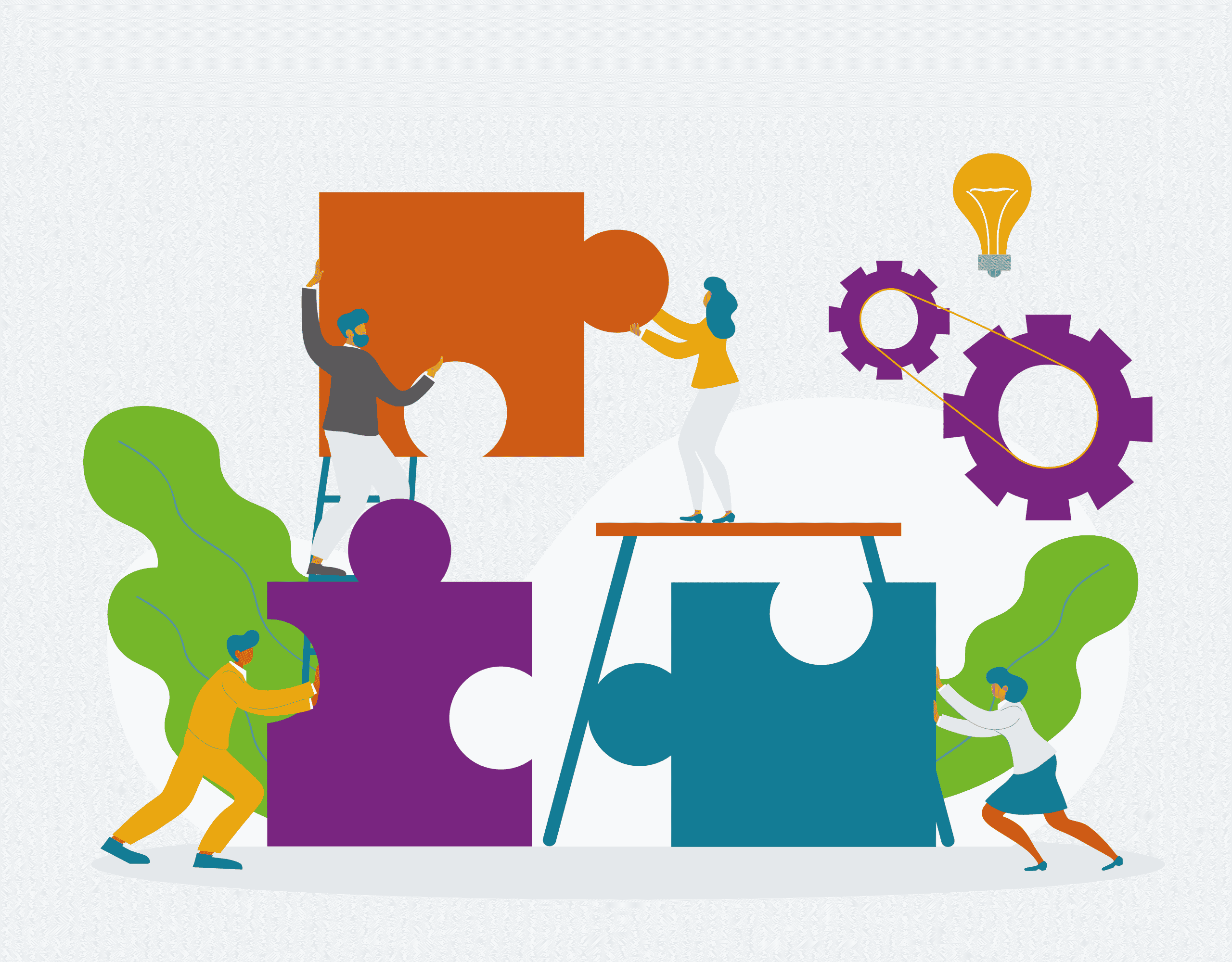Employee engagement is a measure of how committed, involved, and invested an employee is in their work and the organization they work for. High levels of employee engagement are associated with increased productivity, better customer satisfaction, and lower turnover rates. Companies that prioritize employee engagement often see improvements in overall business performance.
There are many factors that contribute to employee engagement, including positive work culture, opportunities for growth and development, effective communication and feedback, and a sense of purpose and meaning in the work being done. Employers can foster employee engagement by creating a supportive and inclusive work environment, providing employees with the resources and support they need to succeed, and regularly soliciting and acting on employee feedback.
Measuring employee engagement can be challenging, but there are various tools and methods available, including surveys, focus groups, and one-on-one interviews. It is important for organizations to regularly assess and track employee engagement in order to identify areas for improvement and take steps to increase engagement levels. By investing in employee engagement, companies can create a more positive and productive work environment for their employees.
Employee Engagement Defined

Employee engagement is a measure of the level of emotional commitment, involvement, and investment an employee has in their work and the organization they work for. It is often used as a way to assess how motivated and engaged employees are in their jobs and how connected they feel to the company's goals and values. The more engaged an employee is towards their company, the more encouraged and motivated they are to continue being productive assets to the organization.
High levels of employee engagement are characterized by employees who are motivated, productive, and committed to the success of the organization. They are likely to go above and beyond in their work and are less likely to leave the company. On the other hand, low levels of employee engagement are characterized by employees who are disengaged and uninvolved in their work and the organization. They may be less productive, less motivated, and more likely to leave the company.
Why is it important to measure Employee Engagement?
Employee engagement is important because it can have a significant impact on business performance. Companies with high levels of employee engagement often see improvements in customer satisfaction, productivity, and profitability. Conversely, companies with low levels of employee engagement may struggle with these metrics.
Measuring Employee Engagement with Brightful (Super Poll)

If you need an online tool to get an initial assessment of the current employee engagement levels in your team, Super Poll - exclusively available on Brightful can help you get a head start.
Activities like Super Poll can be transformed into live surveys to help you measure specific metrics related to employee engagement. Best of all, activities like Super Poll on Brightful are easy to set up and launch: with no additional downloads necessary to play and all can be played easily on a laptop, smartphone, or tablet device!
What is not Employee Engagement?
Employee engagement is not the same as employee satisfaction. While employee satisfaction refers to how happy and content an employee is with their job and the organization they work for, employee engagement refers to the level of commitment, involvement, and investment an employee has in their work and the organization.
Employee engagement is also not the same as employee involvement. While employee involvement refers to the degree to which an employee is involved in decision-making processes and problem-solving within the organization, employee engagement refers to the level of commitment and investment an employee has in their work and the organization as a whole.
Additionally, employee engagement is not the same as employee motivation. While motivation refers to the forces that drive an employee to take action and achieve their goals, employee engagement refers to the level of commitment and investment an employee has in their work and the organization.
What types of questions can measure Employee Engagement?
There are many types of questions that can be used to measure employee engagement. The following list is a sample of questions that can be used for an engagement survey - depending on the size of your company, you can choose from a smaller range or much more extensive list of questions to survey employees.
- How invested are you in the success of the organization?
- Do you feel that your work is meaningful and contributes to the organization's mission?
- Do you feel that your opinions and ideas are valued by management?
- Do you feel that you have the support and resources you need to do your job effectively?
- Do you feel that you have opportunities for growth and development within the organization?
- Do you feel that your job is challenging and rewarding?
- Do you feel a sense of connection and belonging to the organization?
- Do you feel that you have a good work-life balance?
- Do you feel that the organization's values align with your own personal values?
- Do you feel that the company culture is positive and supportive?
How to get the most out of Employee Engagement surveys

To ensure employee surveys used to measure or gauge employee engagement are utilised to their full potential, providing meaningful and valuable feedback for employers as intended on their team engagement, there are several steps they can take:
- Clearly communicate the purpose and goals of the survey: Make sure employees understand why the survey is being conducted and how their feedback will be used to improve the organization.
- Use a variety of survey methods: Consider using a combination of online surveys, focus groups, and one-on-one interviews to gather a diverse range of perspectives and feedback.
- Keep the survey short and focused: Avoid asking too many questions or asking questions that are unrelated to employee engagement. This will help ensure that employees are more likely to complete the survey and provide honest and thoughtful responses.
- Ensure anonymity: Encourage employees to be honest and candid in their responses by ensuring that the survey is anonymous.
- Follow up on survey results: After the survey is completed, review the results and take action to address any issues or concerns that were raised. Make sure to communicate the results to employees and let them know what steps are being taken to address their feedback.
By following these steps, organizations can ensure that employee engagement surveys are effective at gathering valuable feedback and insights that can be used to improve the organization.
How do you build Employee Engagement?
Organizations can take several steps in their workflow and routines to build further employee engagement:
- Create a positive work culture: A positive work culture that is inclusive, supportive, and respectful can help foster a sense of belonging and connection among employees.
- Provide opportunities for growth and development: Offer employees opportunities for learning and development, such as training programs and professional development workshops, to help them feel invested in their own growth and the growth of the organization.
- Foster effective communication and feedback: Encourage open and honest communication and make sure to provide regular feedback to employees. This helps employees feel heard and valued, and can help build trust and collaboration within the organization.
- Recognize and reward employee contributions: Recognize and reward employees for their contributions and hard work. This helps employees feel valued and appreciated, and can increase motivation and commitment.
- Align employee goals with company goals: Help employees see how their work fits into the larger goals and mission of the organization. This can help employees feel a sense of purpose and meaning in their work.
Creating an Employee Engagement Plan

Review the Results of your Engagement Survey
Based on what results from your employee survey generated, identify what you want to achieve with your employee engagement plan. For example, in order to retain more employees in the long term and ensure all of them are more satisfied with the outcomes of how much time and effort they put into their jobs, you may want to start targeting relevant ways to start taking action to achieve this, or any other areas of improvement your employees identify with their work environment.
Choose Focus Areas
Based on your assessment, identify areas where employee engagement could be improved. For example, you may find that employees feel disengaged because they don't feel valued or because they don't have the resources they need to succeed.
Brainstorm Improvements
Based on the areas for improvement you identified, brainstorm ideas and develop a plan of action that outlines the specific actions you will take to improve employee engagement. This might include implementing new training programs, revising your recognition and rewards program, or improving communication with employees.
Make Commitments
Make sure to communicate the employee engagement plan to all employees and seek their input and feedback. This will help ensure that the plan is relevant and effective. Ensure everyone on both sides knows what they need to meet or aim to reach at a certain point to make both the organisation's leadership and employees accountable.
Communicate Progress
After your action plan has been launched, regularly assess and track the progress of your employee engagement plan to ensure that it is having the desired effect. Make adjustments as needed to ensure that you are meeting your employee engagement goals - new areas to further improve your employee engagement may come up along the way.
Conclusion: How can Employee Engagement benefit your team and company in the long term?

By maintaining high levels of employee engagement, an organization can benefit significantly, including but not limited to:
- Increased productivity: Engaged employees are more motivated, committed, and productive, which can lead to increased efficiency and output.
- Improved customer satisfaction: Engaged employees are more likely to provide high-quality customer service, which can lead to increased customer satisfaction and loyalty.
- Lower turnover rates: Engaged employees are less likely to leave the organization, which can reduce the costs associated with employee turnover and help maintain a stable and experienced workforce.
- Better financial performance: Companies with high levels of employee engagement often experience improved financial performance, including increased profits and higher shareholder value.
- Greater innovation: Engaged employees are more likely to be creative and come up with new ideas and solutions, which can drive innovation and growth within the organization.
There are many benefits that come with ensuring your organisation maintains high levels of employee engagement. Not only will you be able to retain employees for longer and affirm that their efforts are noticed and acknowledged as valuable to the company, but you as a leader can also build a greater understanding of each member of your team - noting down where their strengths lie and where they need guidance to become more productive assets.









